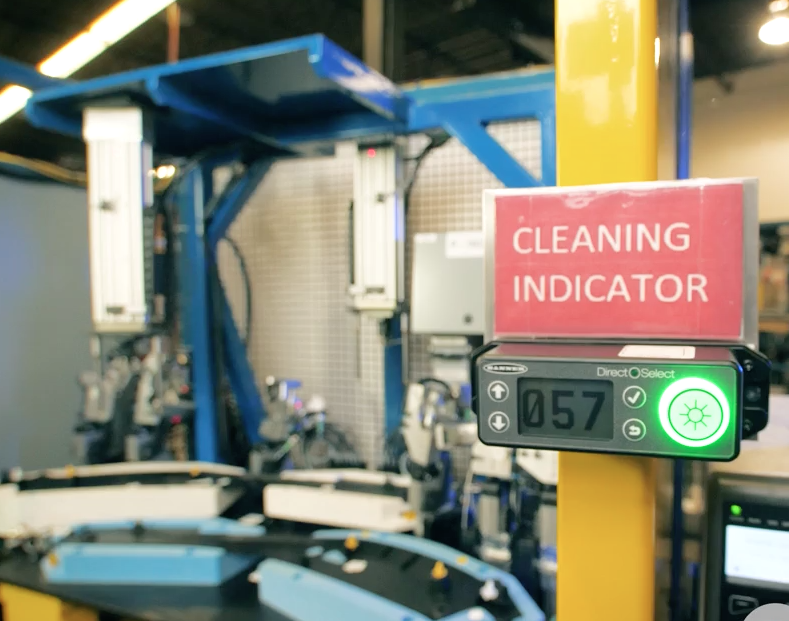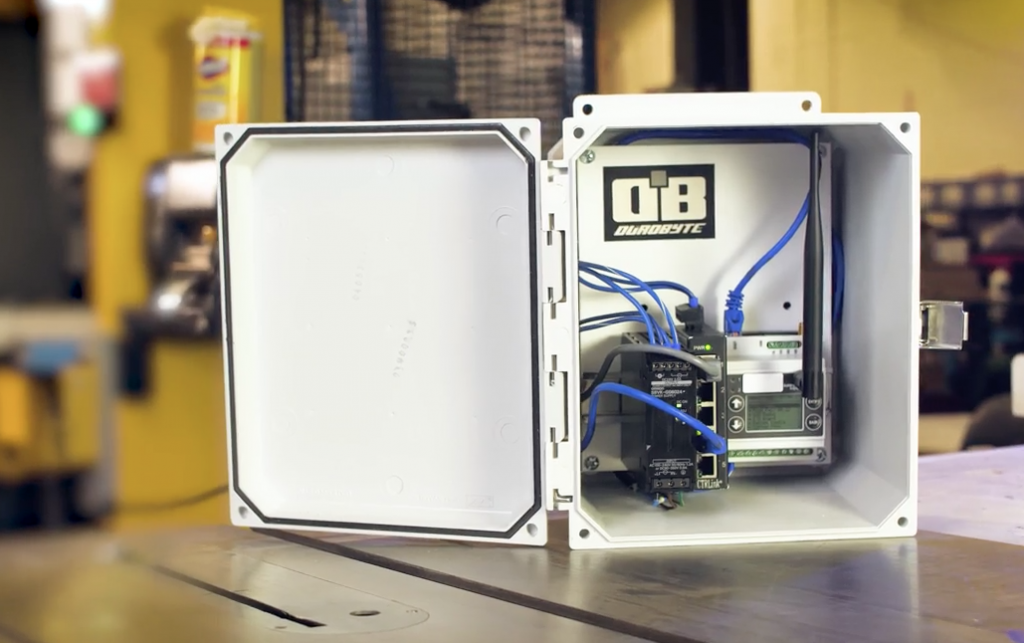
A clean workcell: Automation builder pivots into manufacturing with new sanitization system
May 22, 2020
By
Kristina Urquhart
 The Clean Cell workstation notification unit. Photo: DuroByte
The Clean Cell workstation notification unit. Photo: DuroByte DuroByte Inc., an Ontario-based automation system builder, has created a product that tracks sanitization of work cells in a manufacturing facility in order to avoid transmission of COVID-19.
Clean Cell consists of a small module for workstations that notifies operators when cleaning is required. The module then wirelessly transmits data to a separate processing unit that generates reports for management or health and safety teams.
The Windsor–based DuroByte is a provider of engineering, automation builds and retooling, primarily for automotive manufacturers. Among other services, the company assists in the implementation of CNC, PLC, HMI, SCADA, machine vision, robotics and networks.
DuroByte doesn’t often make its own products – but the pandemic introduced a new need, says Curtis Laurie, the company’s business development manager.
“This whole COVID situation has required us to pivot, because nobody is going and doing service work at the automotive facilities, especially right now,” he says. “Hard times force innovation.”
The DuroByte team came up with the product idea in mid-March, and started developing the software two weeks later. They’re manufacturing and assembling the Clean Cell at DuroByte’s Windsor facility, using some off-the shelf components and programming.
While the system was originally designed for use in manufacturing facilities, it can be used across industries, including in retail at cashier stations.
How it works
Clean Cell’s notification unit includes a timer and a capacitive push button that provides a colour-based prompt indicating the cleanliness of the work area. Green means the station was recently cleaned, and yellow indicates cleaning needs to be conducted soon.
When the light turns red to signal that it’s time for the cell to be cleaned, a worker sanitizes the station and presses the button to restart the clock. An optional sensor is available to confirm that the operator has removed the sanitizing product in order to clean.
DuroByte programs the notification units with a pre-selected amount of time, but can make adjustments in frequency based on manufacturers’ individual cleaning needs.
The workstation module uses 900 MHz radio frequency to communicate to a master system controller up to 9.6 kilometres (six miles) away. One controller can connect to up to 40 workstation modules before a second one needs to be added.
Data analysis
As an IIoT-enabled device, the Clean Cell controller can be connected to either a local network or a cloud-based network. It can also be used as an independent standalone device with an SD card to collect data.
That data is aggregated and organized into customizable, real-time status dashboards for each workstation. Managers can use log reports and time-to-respond graphs to verify that cleaning is being completed on schedule. Text or email notifications can be sent out to supervisors when cleaning has not occurred.
For example, if the units signals a cleaning is required at 11:30 and the operator doesn’t push the button for 15 minutes, management can investigate why the delay occurred, Laurie says.
“You can really dive in and get a better understanding of how much risk you’re putting out there for the operator – and for the employer, because ultimately the employer is responsible for the employee’s health and safety.”
Laurie says that the notification units are especially ideal to ensure safety during frequent workstation turnovers as operators shift down the production line.
“Our mindset is if you continue to do that type of process [upon reopening] this will absolutely make it much, much safer for the operators to do that.”
Advertisement
- AutomationDirect introduces VPN routers for remote machines
- Cognex debuts In-Sight D900 embedded vision system
